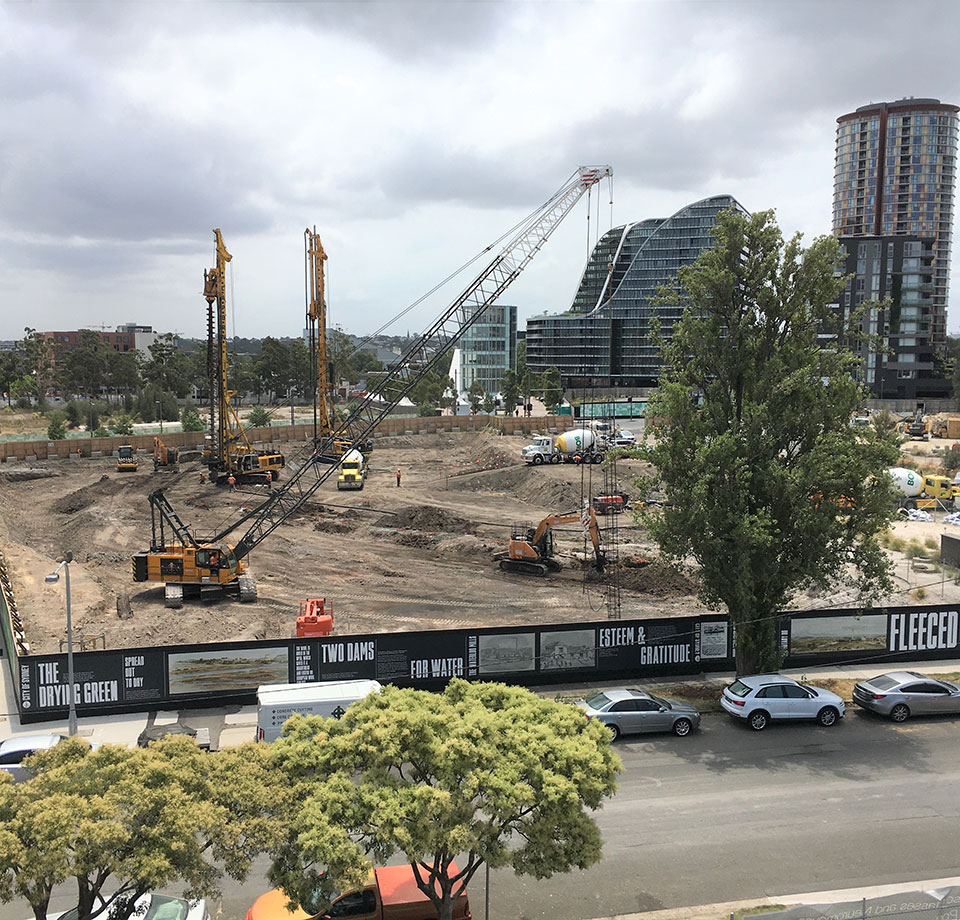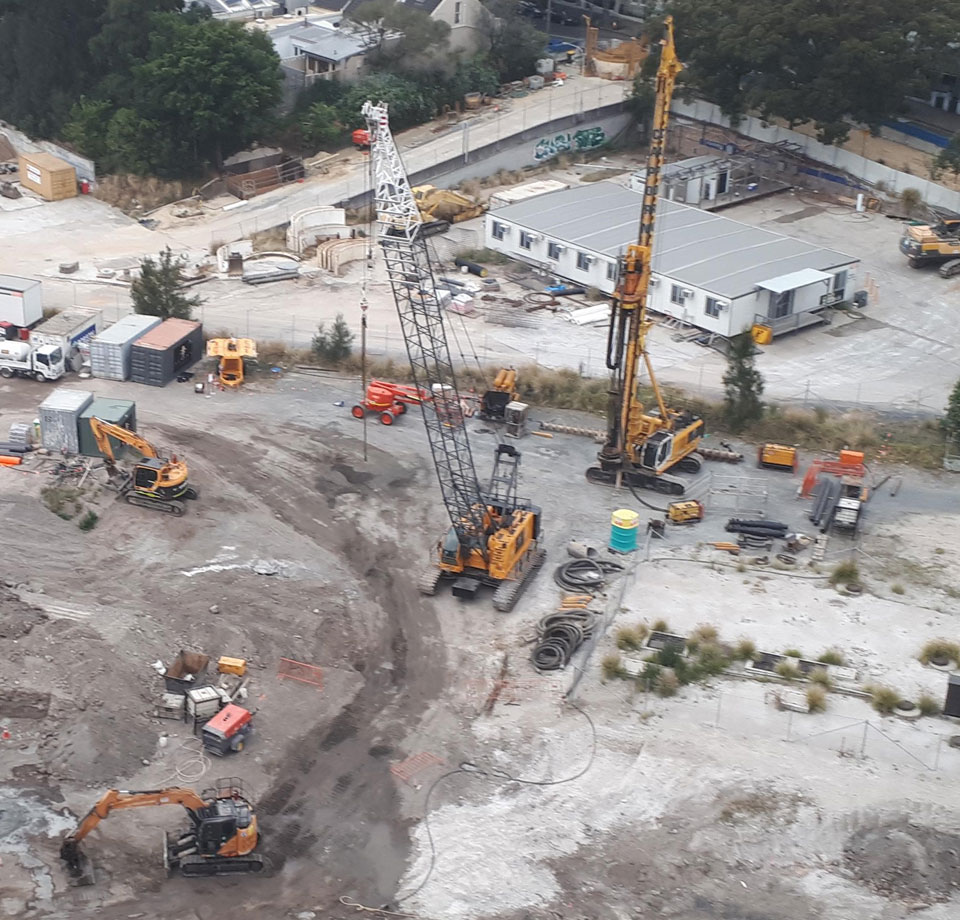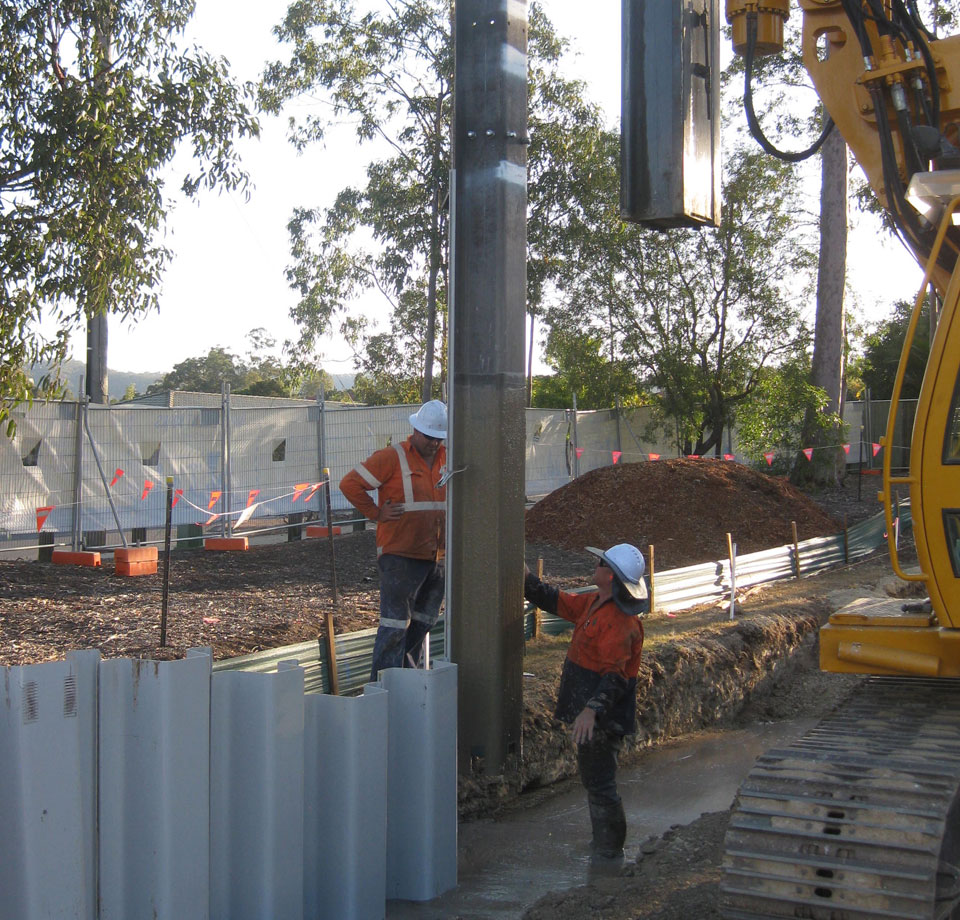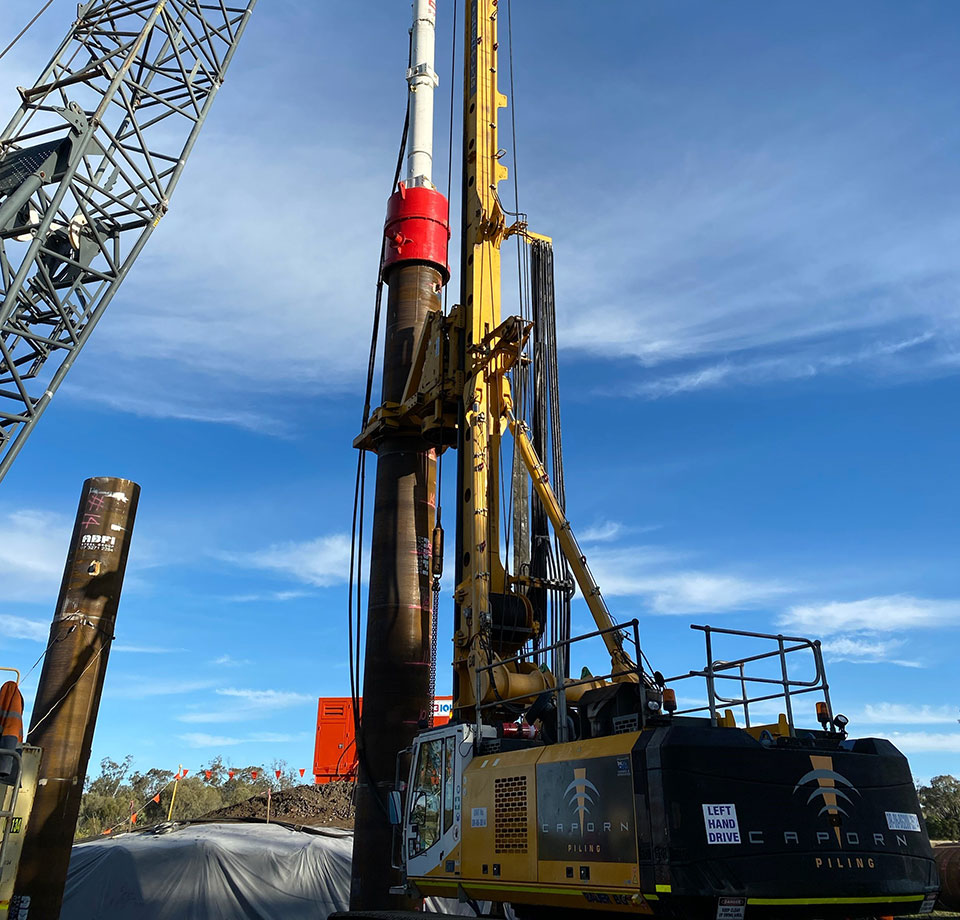Cast in Place Displacement Piles
Cast-in-situ Displacement Piles are installed using large-torque, high-crowd piling rigs equipped with tooling designed to displace soil laterally, compacting the surrounding soil.
The equipment and process used is very similar to CFA piling method, where a rotary drilling rig uses a hollow stem tube with displacement tool attached. The soil is displaced laterally as the displacement tool penetrates the ground.
When the final design depth is reached, concrete is pumped through the hollow stem tube to the bottom of the pile, as the tube is extracted under positive pressure.
Generally, these are installed on a grid pattern to improve in-situ soil conditions of a ‘block’ of soil.
Typically, they are unreinforced where used solely as a ground improvement solution. But where lateral loads or uplift forces are to be catered for then they are reinforced with centralized bars.
The process is highly productive and vibration free.
They are commonly known as Controlled Modulus Column (CMC) Rigid Inclusions.


Combination Cut-off Walls
Combination Cut-off Walls are most often designed to address the needs of a specific project. Typically, they are used to create barriers to restrict groundwater flows containing contaminants.
A common combination is the bentonite slurry wall installed in parallel with a physical barrier such as vinyl sheet piles. Vinyl sheet piles are UV and corrosion resistant and when used with sealant, effective permeability of less than 1×10-11m/s can be achieved.
This combination is often employed around landfills or other contained waste facilities that need to dewater inside the facility without removing and treating large volumes of groundwater from outside the facility.
Verification testing of permeability can be undertaken as early works on a test section or during the works at a number of locations along the alignment.
RELATED PROJECTS
View some of our projects requiring ground improvement.



